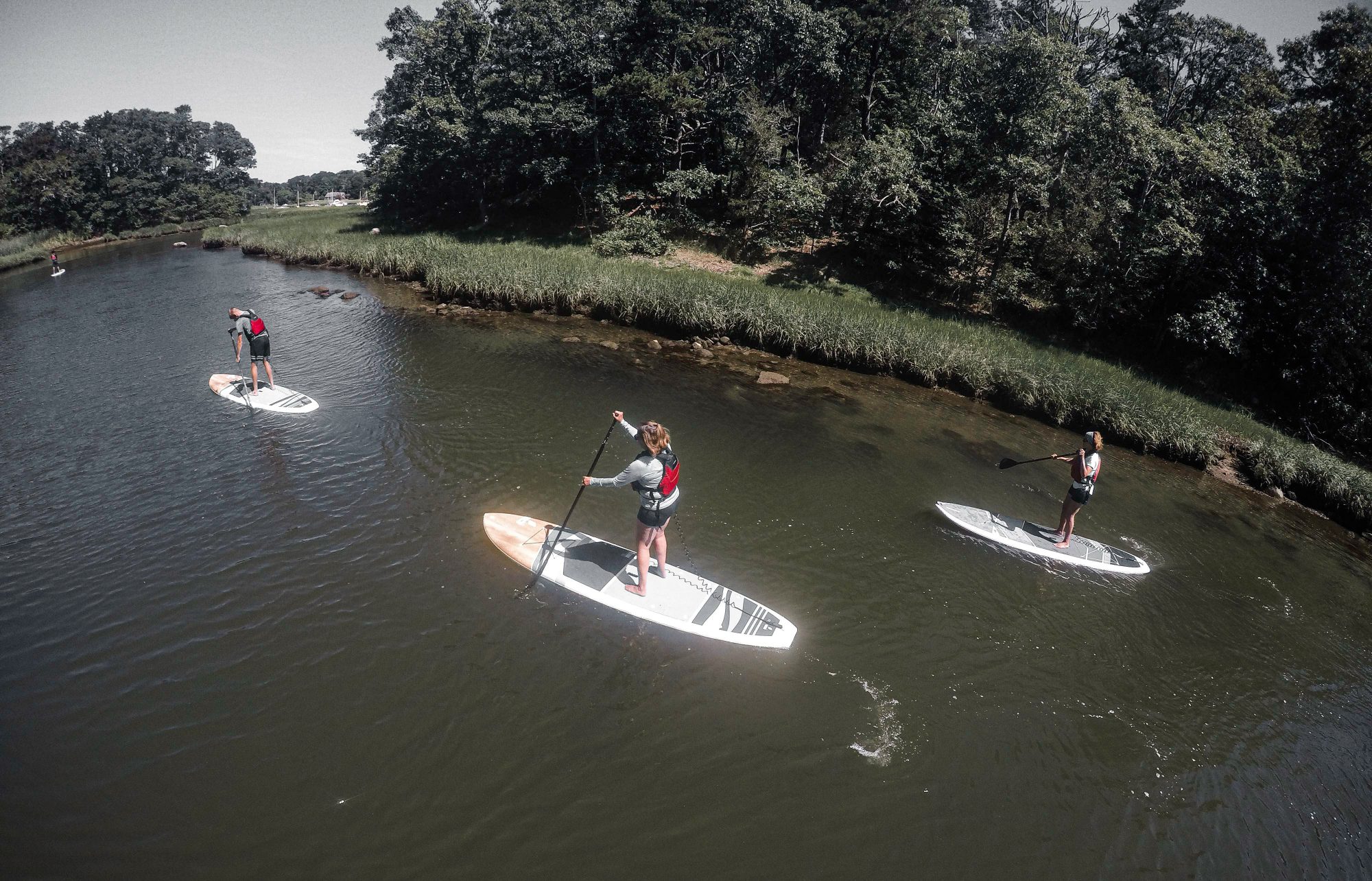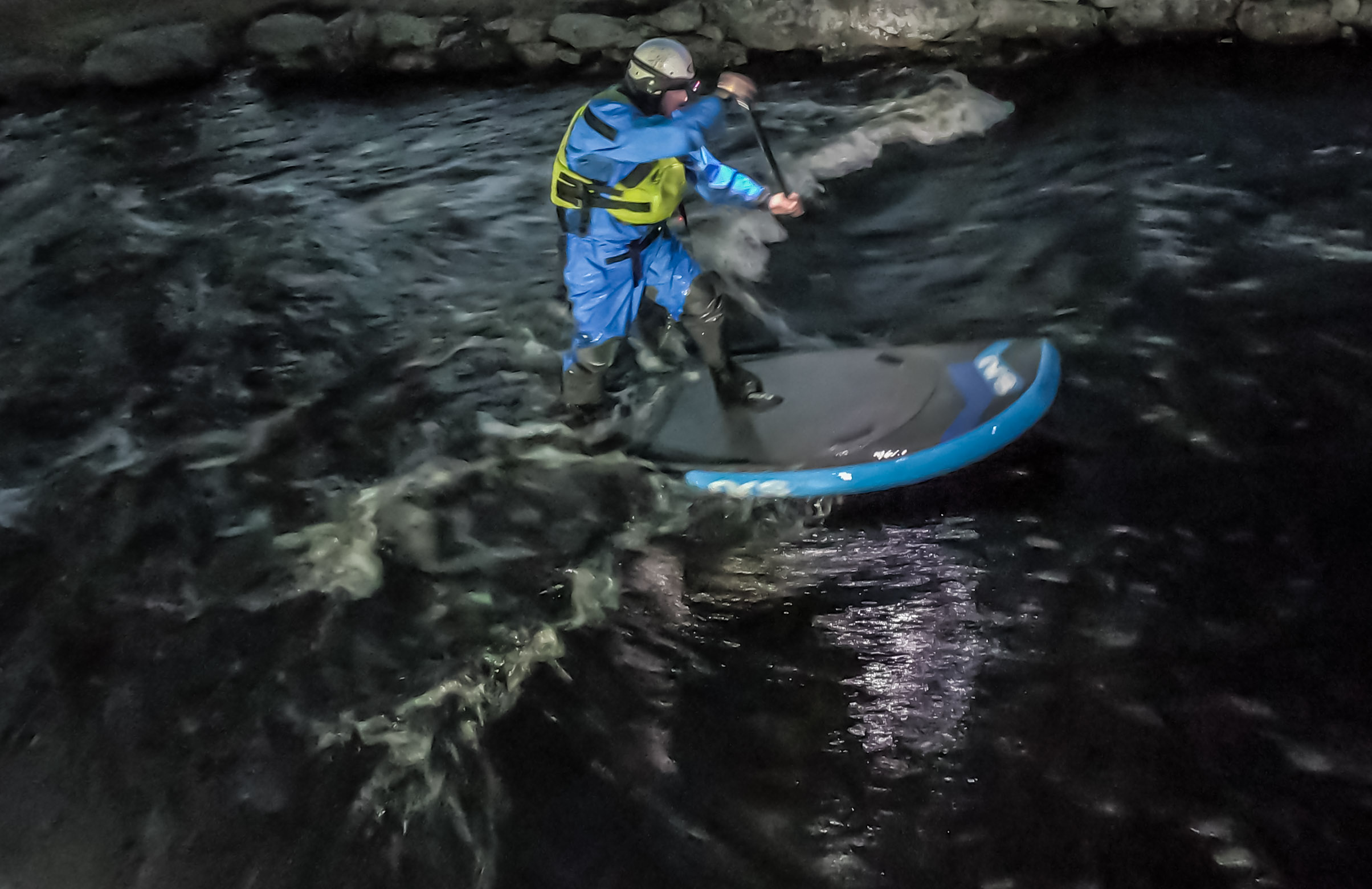For many people, choosing between an inflatable or hard stand-up paddleboard (SUP) is difficult, as both types have their pros and cons. Read on to find out which kind of SUP is the best choice for you.

Hard Paddleboards
Hard boards, also known as solid boards, are what first come to mind for most paddlers when thinking about SUPs. They’re made from a variety of materials, including fiberglass, epoxy, and resin. Styled after traditional surfboards, solid boards have evolved to fill a variety of uses and offer their own pros and cons.
The Pros of Hard SUPs
Rigidity: Hard boards are more rigid than inflatables, which allows them to cut through the water faster, glide better, and require less effort to paddle. Most people who surf, race, and tour on their SUPs choose solid boards. The exception to the rule is whitewater SUPers, who often prefer inflatable boards.
Performance: The rigidity of hard boards provides greater performance than their inflatable counterparts. They travel faster and are more maneuverable. Solid boards also typically ride lower in the water, which increases their stability.
Ready to go: Unlike inflatables, you don’t need to blow up a hard board. This will save precious time and effort if you’re rushing out for a post-work paddle.
Repairable: Although hard boards are more susceptible to dings and dents, they require minimal maintenance. If a hard board is damaged, it’s more easily repaired than an inflatable. Handy paddlers can normally make repairs at home. When in doubt, a surf shop can likely fix your board.
The Cons of Hard SUPs
Cumbersome: Hard boards are large and unwieldy. This makes them a challenge to transport, and, more significantly, store when they are not in use.
Heavier: Solid boards are often heavier than inflatables. This is especially true of more beginner-friendly boards made of materials like plastic.

Inflatable Stand-Up Paddleboards
Inflatable SUPs are a newcomer when compared to hard boards. Early-generation inflatable boards were often soft and had a tendency to buckle (this was particularly true if they were not completely inflated). That said, they’ve greatly improved over the years—their performance today is impressive. A testament to the progression of inflatable SUPs is that they’re now the go-to choice for activities ranging from rugged whitewater paddling to relaxing SUP yoga.
Inflatable SUPs offer a handful of advantages over their hard brethren.
The Pros of Inflatable SUPs
Packability: One of the greatest advantages of inflatable SUPs is their ability to deflate, roll up, and store in their own carrying case, bag, or pack. This means they need minimal storage space and are easy to transport. As a result, they are a great choice for those living in smaller spaces or with limited storage. It also makes them a smart selection for those who don’t want to deal with special racks for their vehicle or who use public transportation.
Comfort: Inflatable paddleboards are generally softer than hard boards. This makes them a good choice for beginners since it’s a bit gentler if you fall and hit the board. Thanks to the softer, more comfortable nature of inflatables, they’re also popular with people who plan to use them for activities like yoga.
Toughness: Inflatable SUPs are rugged. They can take a beating better than hard boards and last for years if properly cared for. It’s the reason why whitewater paddlers prefer inflatable SUPs. It’s also why inflatable boards are a great choice for kids.
The Cons of Inflatable SUPs
Inflation: The big disadvantage of inflatable SUPs is that you have to blow them up. It can take anywhere from 5-15 minutes to inflate a board—which is time most paddlers would rather spend on the water.
Thickness: Inflatable boards are generally thicker than their hard board counterparts. Because of this, they sit higher on the water. This can give them a “tippy” feel and, if you fall off, may make them more challenging to get back on.
High maintenance: It’s difficult to repair an inflatable board. In particular, patching an inflatable is very hard.

Get On Board
Deciding which SUP is right for you comes down to a handful of factors, such as:
- Use
- Performance
- Storage
- Transportation
- Weight
- Durability
- Convenience
Ultimately, the best paddleboard is the board you’ll use. So, think about your specific needs and match your next paddle board to them.
Luke Foley
Luke Foley is passionate about discovering and sharing hidden local treasures and has long been a New England adventure enthusiast. After all, there are only a few places where you can skin for fresh tracks in the morning and have a sunset surf session on the same day.




